3 Types of Walnut Trees in Tennessee (With Pictures)
As of 2021, Tennessee was home to over 200,000 acres of forests containing walnut trees, a significant component of the state's hardwood resources. Over 250,000 walnut trees are cultivated, contributing significantly to the local agriculture and economy. Here are three walnut tree types that you can find in the state.
Tennessee hosts several walnut species, including the native Black Walnut (Juglans nigra) and Butternut (Juglans cinerea), as well as the introduced English Walnut (Juglans regia), all known for their valuable nuts and wood.
These towering natural residents are not only providers of delicious nuts and shade but also play a crucial role in the ecosystem, affecting nearby plant growth in a way that has puzzled scientists for decades. Learn why, as you read this article below.
Summary
- The Black Walnut, known for its hard, dark wood and richly flavored nuts, covers approximately 100,000 acres of Tennessee's forests.
- The Butternut is less common and prized for its lighter wood and mild-flavored nuts. It's susceptible to butternut canker, significantly affecting its population and putting it on the endangered species list in some U.S. parts.
- The English Walnut, native to Asia and Europe, grows up to 60 feet tall, with smoother bark and fewer leaflets compared to native black walnuts.
- These trees are primarily grown for their high-quality wood and nutritious nuts, which are in demand both domestically and internationally.
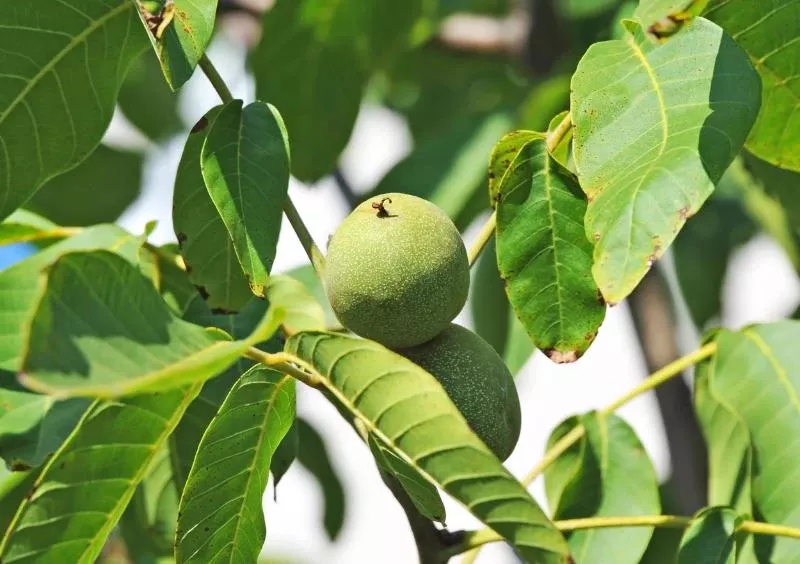
On this page:
| Species | Size (Height) | Nut Characteristics | Habitat Preferences |
|---|---|---|---|
| Black Walnut | Large, up to 75 ft tall | Thick, hard shell; rich flavor | Rich, well-drained soils in mixed hardwood forests; full sun |
| Butternut (White Walnut) | Medium, up to 60 ft tall | Thinner shell; oily, sweet taste | Well-drained soils, often found along stream banks; full sun to partial shade |
| English Walnut | Large, up to 66 ft tall | Thin shell; mild, sweet flavor | Deep, fertile, well-drained soils; cultivated, less common in the wild; full sun, protected from cold winds |
Black Walnut (Juglans Nigra)
The Black Walnut, or Juglans nigra, is a notable species among nut trees found in Tennessee. Recognized for its dark, deeply furrowed bark and pinnate leaves, this deciduous tree contributes significantly to the local flora. You’ll notice each leaf is composed of multiple leaflets, adding to its ornamental charm.
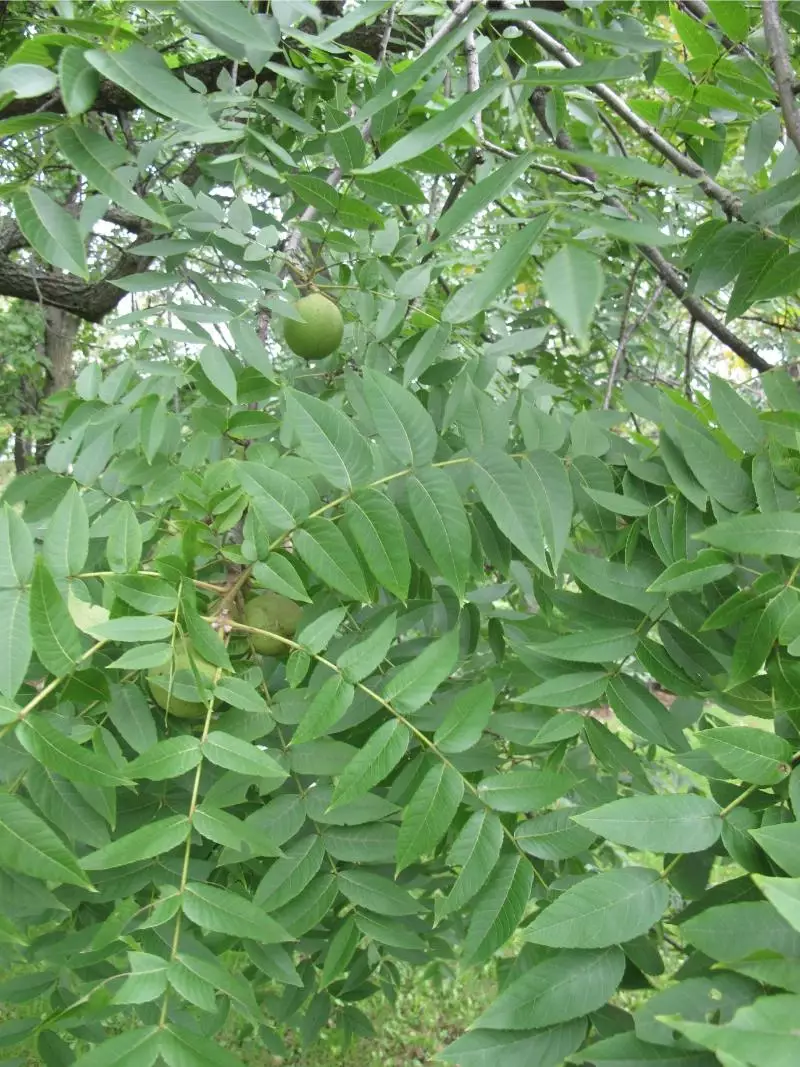
The Black Walnut, commonly referred to as American Walnut, is known for its robust size and high-quality nuts. These trees can reach up to 100 feet tall, boasting leaves that are 1 to 2 feet long. The dark, deeply furrowed bark is a distinct feature, matched by the rich flavor of its nuts which makes it a popular choice. These nuts can be used for food, dye, and ink.
Size & fruit
- Mature height: Typically 70–100 feet
- Canopy width: 50–75 feet
- Fruit: Large, round, green drupes with a tough, inedible husk
The tree loves well-drained soil, thriving in various soil types as long as they are deep and fertile. Black Walnuts demand your patience for they grow slowly, yet their longevity is quite rewarding.
Features of black walnut
- Hardwood: Ideal for furniture making due to its strength and stunning grain
- Roots: Produce juglone, a chemical harmful to certain plants but doesn't affect the Black Walnut itself
- Flowers: Male flowers are slender catkins, while female flowers become the nut-producing fruit
This outstanding tree not only provides delicious nuts and valuable timber but also invites wildlife with its fruits and offers adequate shade with its broad canopy.
When planting Black Walnut, be mindful they are allelopathic, meaning their roots can inhibit the growth of nearby plants. Therefore, when planning your garden, choose locations and companion plants wisely.
The puzzling aspect for scientists has been understanding the specific mechanisms by which juglone affects other plants, and how these effects can vary among different species. Some plants are highly sensitive to juglone and will struggle to grow or even die when planted near walnut trees, while others are more resistant and can thrive in close proximity.
White Walnut or Butternut (Juglans Cinerea)
The White Walnut, commonly known as the Butternut or Juglans cinerea, is one of the distinct nut trees you’ll find in Tennessee. Its nuts are sought after for their rich, buttery taste and are encased in a thin shell.
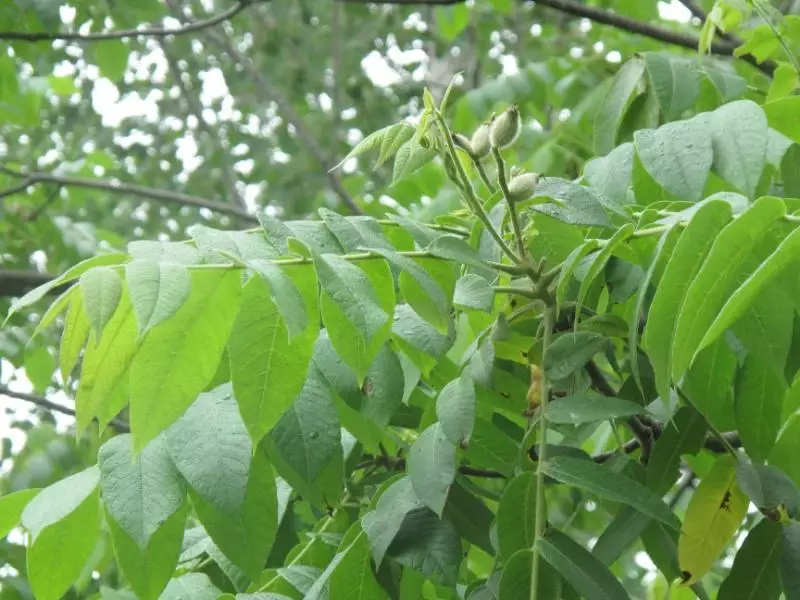
Being part of the Juglandaceae family, the Butternut shares many characteristics with other walnut trees, but it also possesses its unique qualities.
Characteristics of butternut
- Size: Grows up to 66 feet tall, occasionally reaching 130 feet
- Leaves: Pinnate, with 11–17 leaflets per leaf
- Foliage: Produces a rounded canopy
This tree flourishes in well-drained soil with a pH of 6.8 to 7.2 and revels in full sun. Its leaves are long, which turn a beautiful yellow come fall. The foliage and nuts contain juglone, a compound indicative of walnut trees, which can affect other nearby plants.
Nuts and harvest
- Husk: The nuts are covered by a green, sticky husk that reveals the nut when removed
- Harvest: Late summer to early fall is the best time for harvesting Butternut
Known to be edible and delicious, the nuts are great for cooking and baking. In North America, the Butternut is cherished but is less common than the Black Walnut. As you explore the edible nuts, remember, the Butternut’s drupe stands out for its enjoyable flavor and culinary versatility.
Unfortunately, this species is susceptible to butternut canker, which significantly affects its population. It’s on the endangered species list in some parts of the United States, and care should be taken to protect this valuable species.
English Walnut or Persian Walnut (Juglans Regia)
The English Walnut, also known as the Persian Walnut (Juglans regia), stands out among nut trees. Native to Asia and Europe, it's a cherished species both in the United States and Tennessee for its delicious nuts and valuable timber.
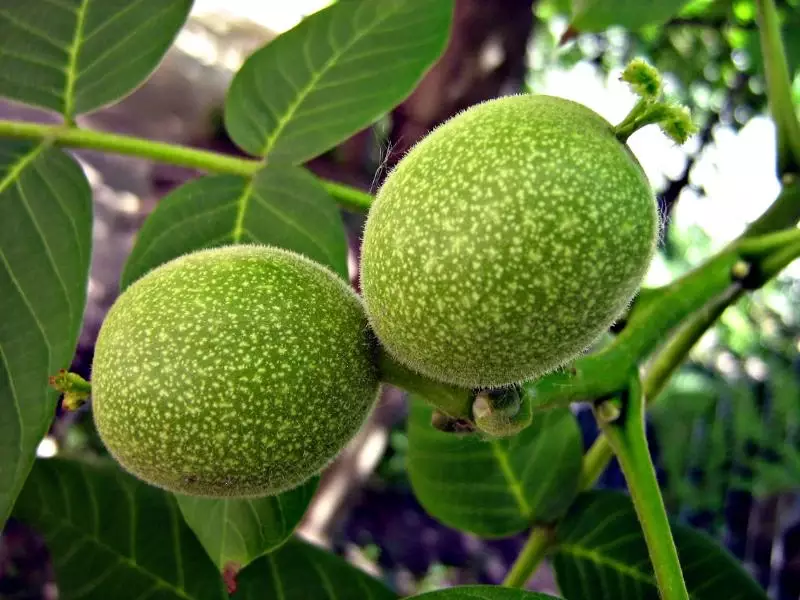
A bit smaller than the native black walnut, this species can grow up to 60 feet tall. The English walnut has smoother bark and leaves with fewer leaflets. Cultivars like 'Carpathian' are popular in Tennessee gardens for their cold hardiness and nut quality.
Characteristics
- Size: Reaches 40–60 feet tall with a spread equally wide
- Leaves: Pinnate with 5–11 leaflets, exuding a citrus fragrance when crushed
- Fruit: The edible walnuts are prized for their rich taste
Soil requirements
- Prefers well-drained soil.
- Ensures best growth away from areas prone to frost.
The English Walnut tree is not only productive but also ornamental, with a spreading canopy that provides ample shade. In springtime, its lush, green leaves make it an attractive addition to your landscape.
Harvesting: Your English Walnut will bear fruit in the autumn. The nuts are encased in a green husk that splits open as they ripen.
Plant care: Ensure your tree has sufficient space to grow, as the roots need room to expand. Regular watering and fertilization will keep your tree healthy and productive for years.
Wood use: The hardwood obtained from Juglans regia is used for high-quality furniture and gunstocks because of its fine grain and strength.
Cultivation and uses
When it comes to cultivating walnut trees in Tennessee, you'll find it's a blend of the right soil conditions and an understanding of the tree's benefit to the ecosystem and economy. These considerations are critical for both beautiful landscapes and profitable nut production.
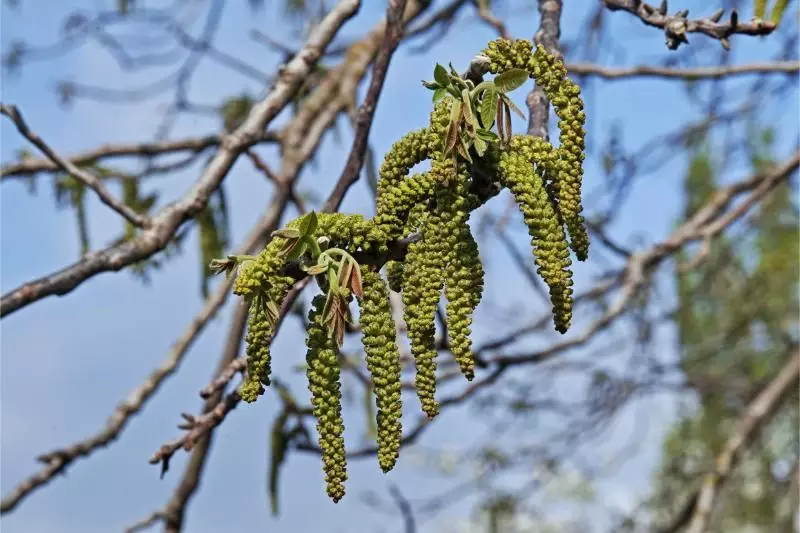
Planting and soil requirements
To start your walnut tree off right, ensure you plant it in deep, well-drained soil that's rich in organic matter. Tennessee's diverse climate allows walnut trees, especially black walnuts and pecans, to flourish.
They require moist soil but with proper drainage to prevent standing water. The ideal time for planting is during the dormant season, from late fall to early spring.
Benefits in landscaping and ecology
Walnut trees, including pecans and black walnuts, offer more than just nuts; they are powerful players in ecosystems. These large, leafy trees create deep fissures in their bark, which, along with their branches and leaves, can provide habitats for numerous species.
Their height and expansive foliage make them ideal candidates for landscape features and providing shade in your yard.
Commercial production and nut products
Walnut trees in Tennessee contribute significantly to the state's commercial production of nuts. Black walnut in particular is valued for its hardwood, making it a dual-purpose tree—it not only yields delicious nuts but also valuable lumber for furniture.
The nuts are often harvested and processed into various food products like baked goods and snacks.



